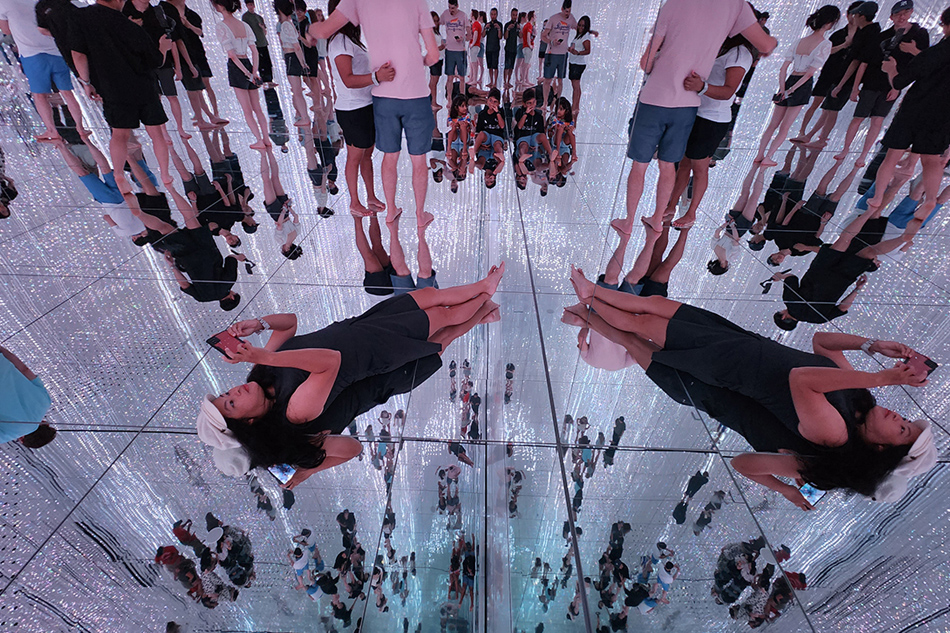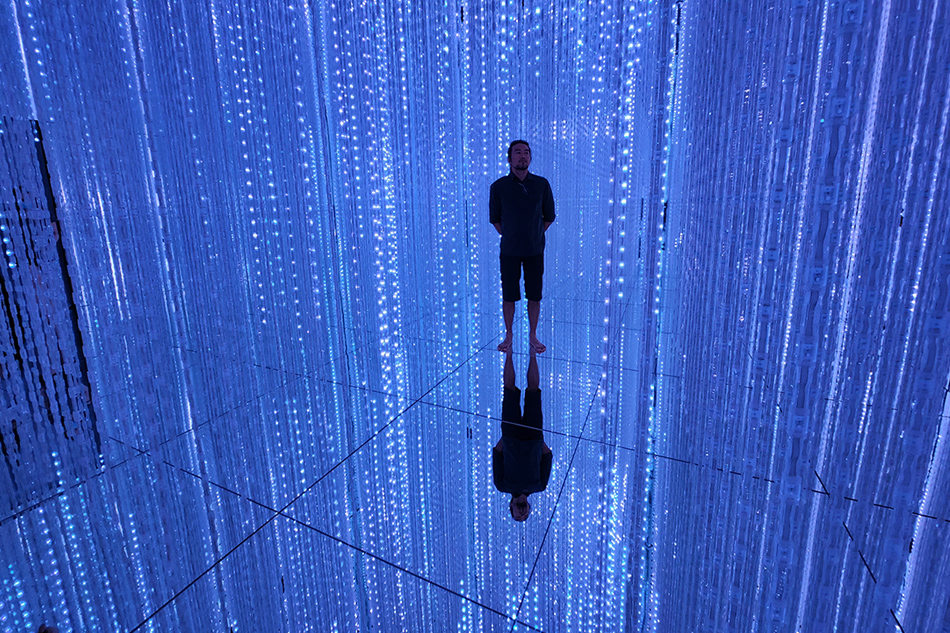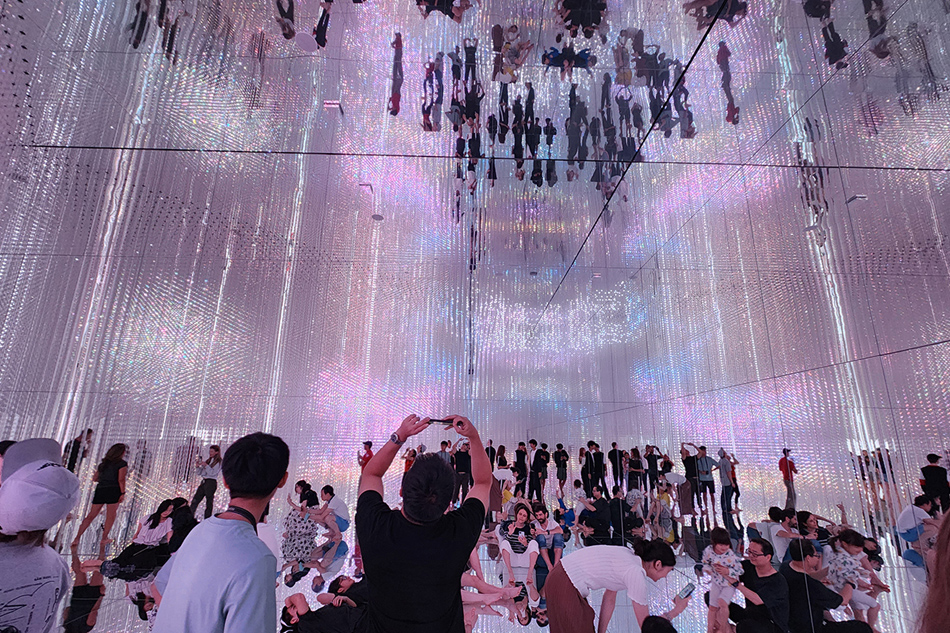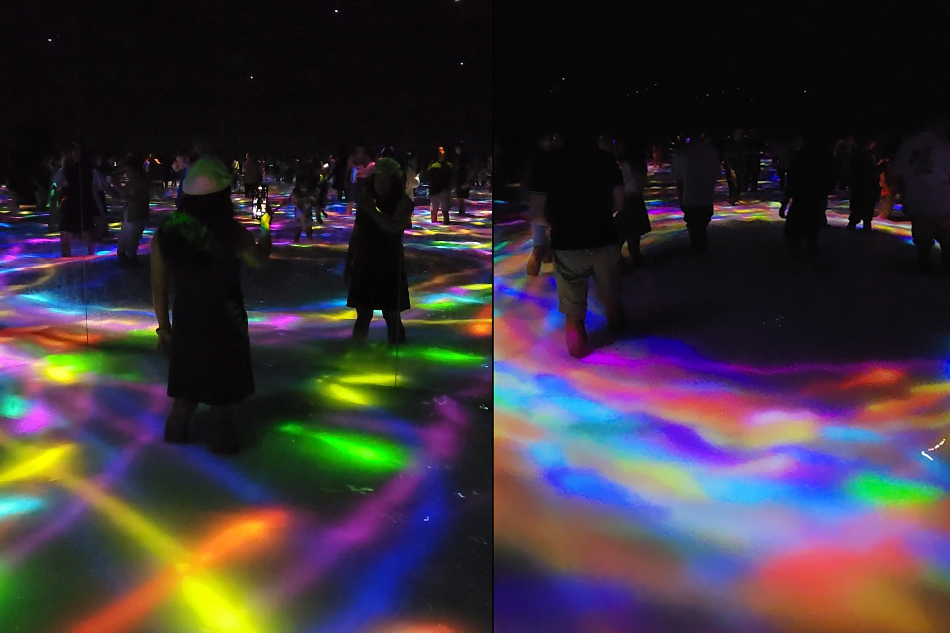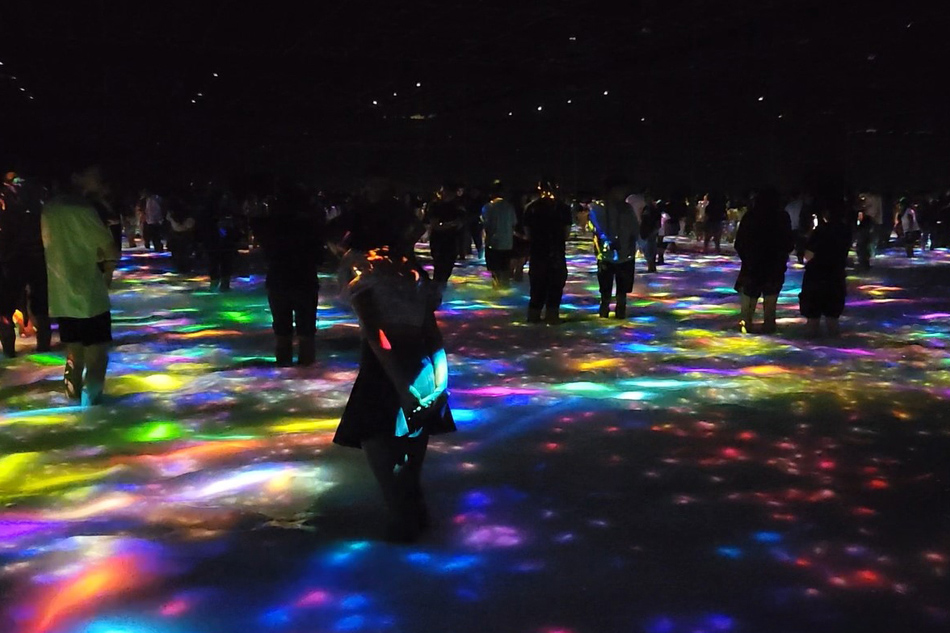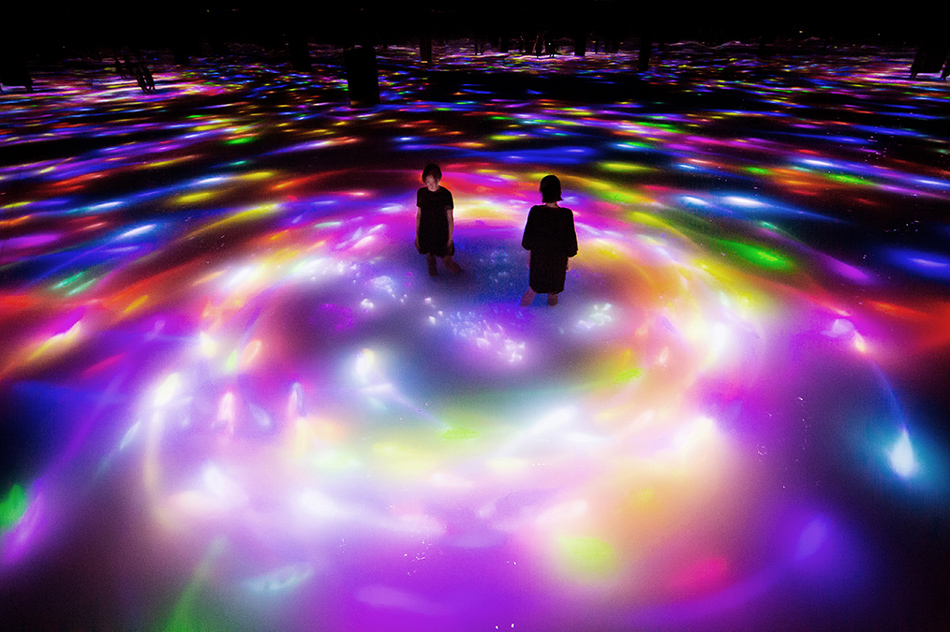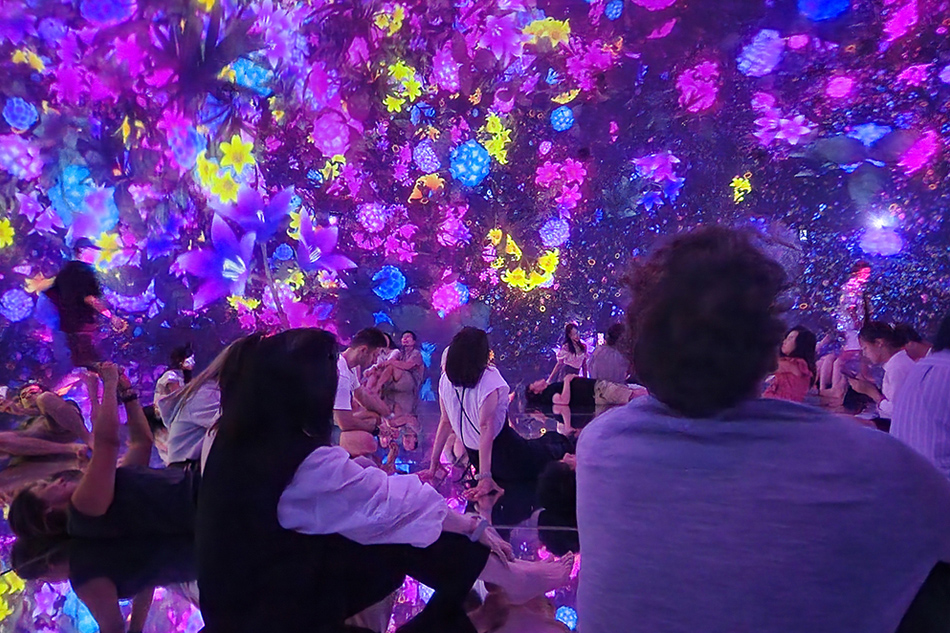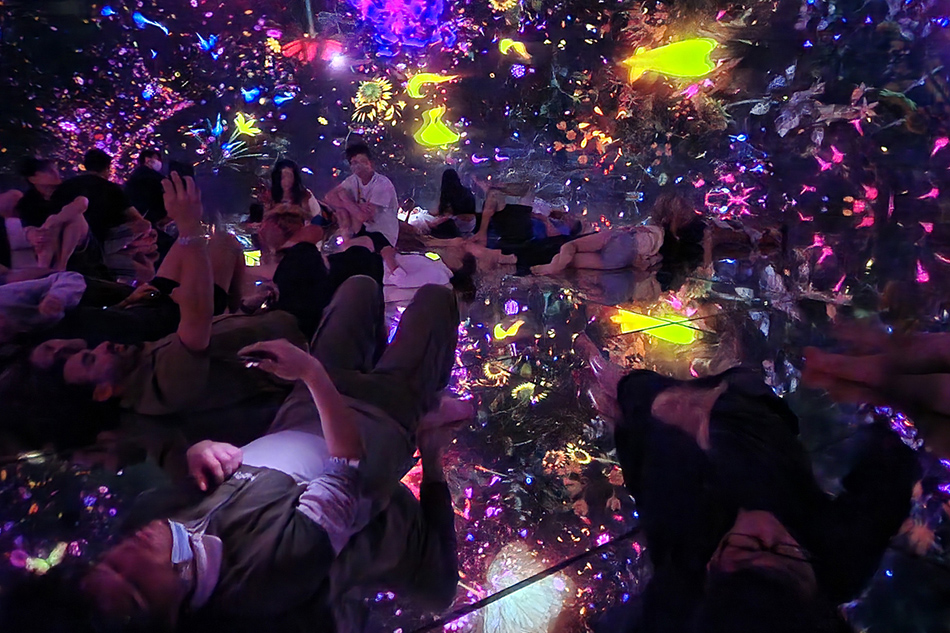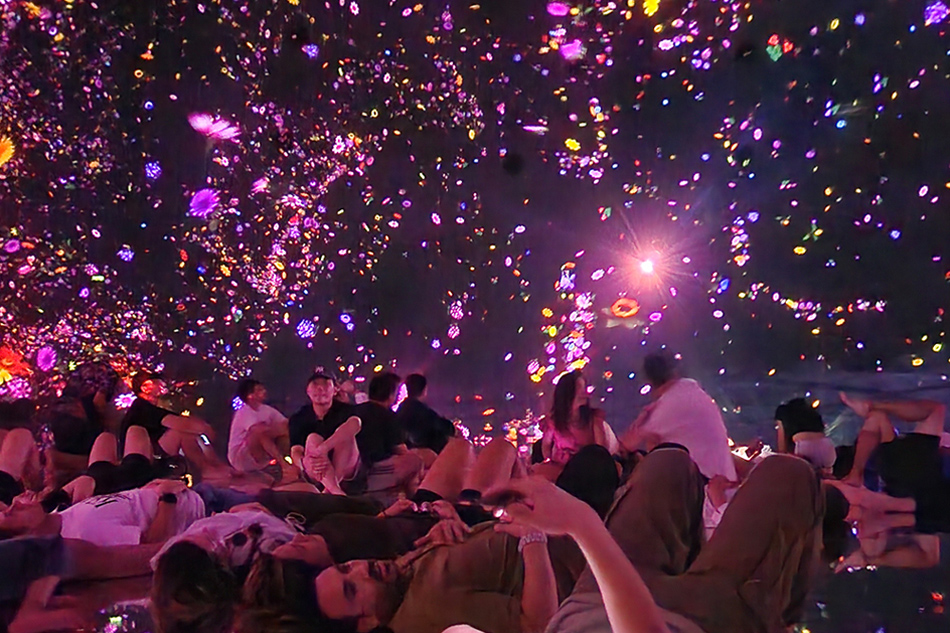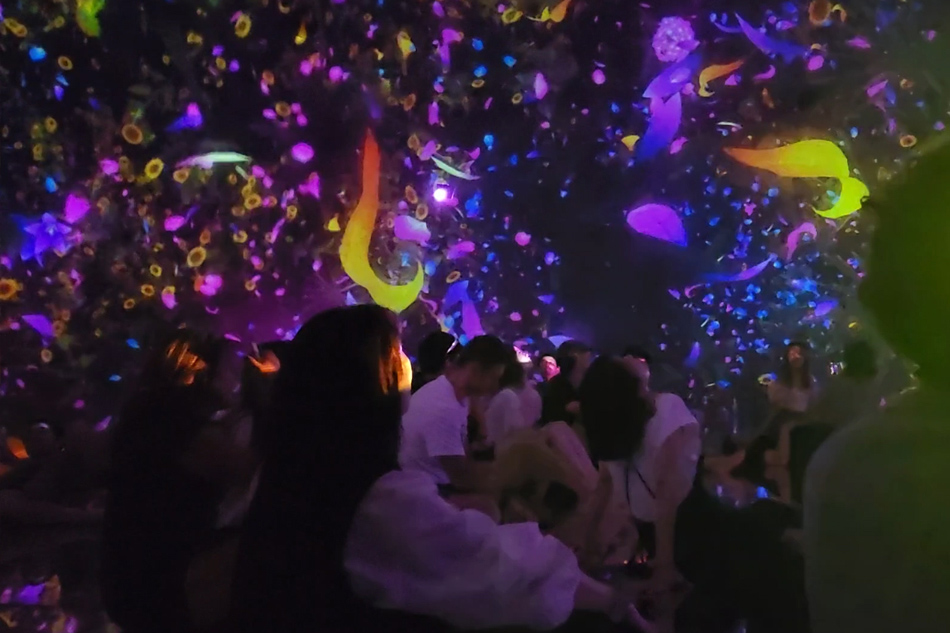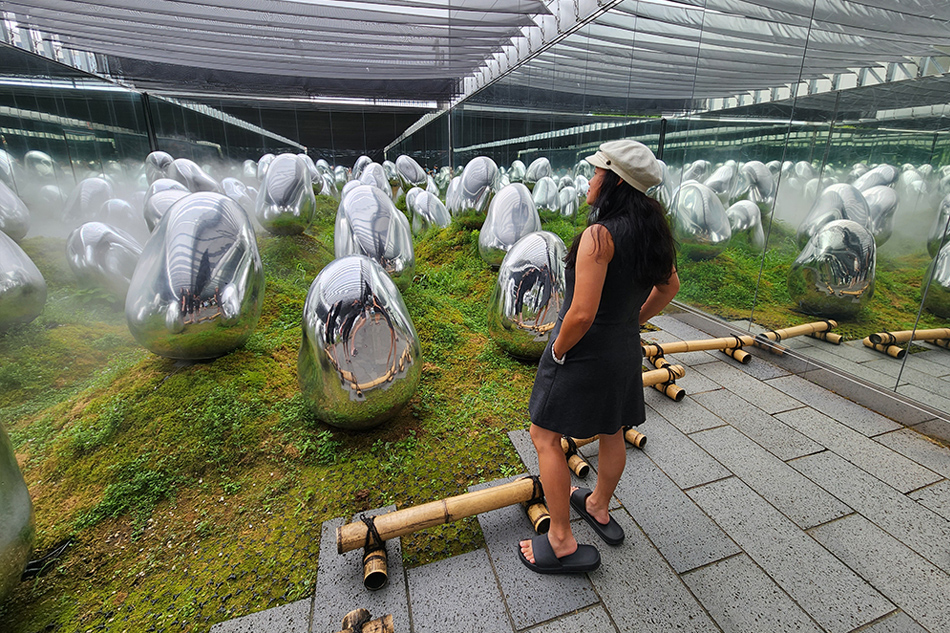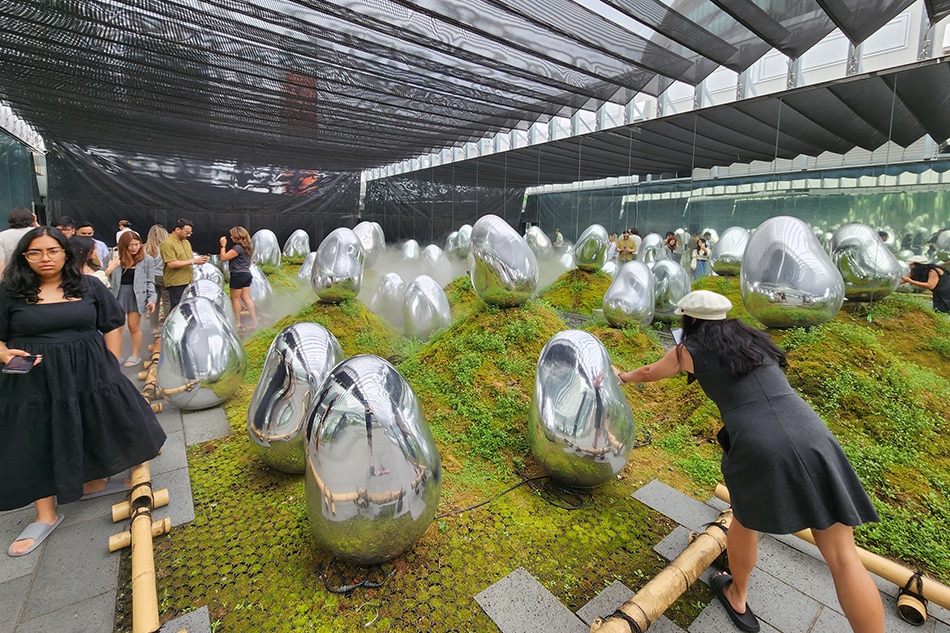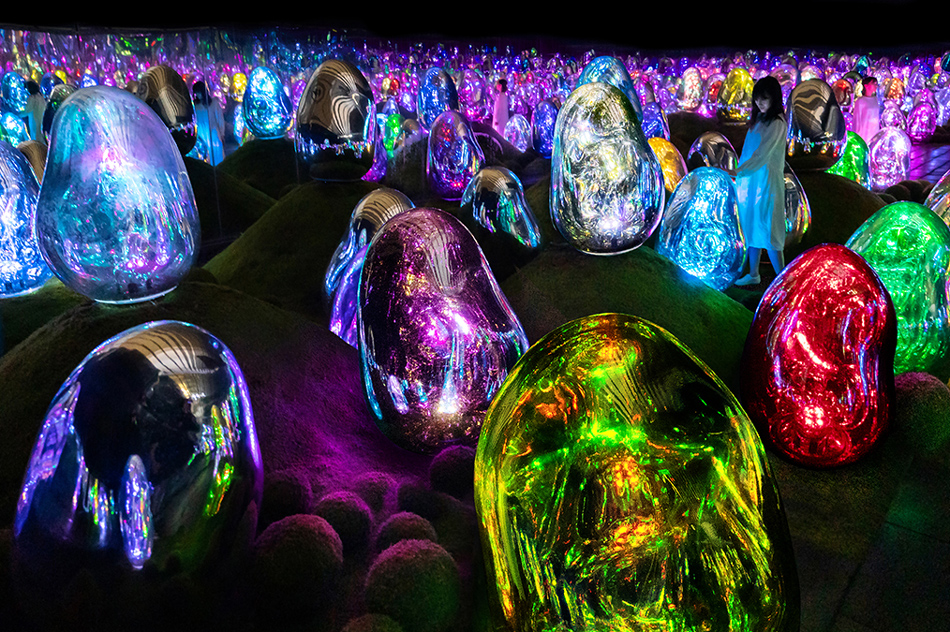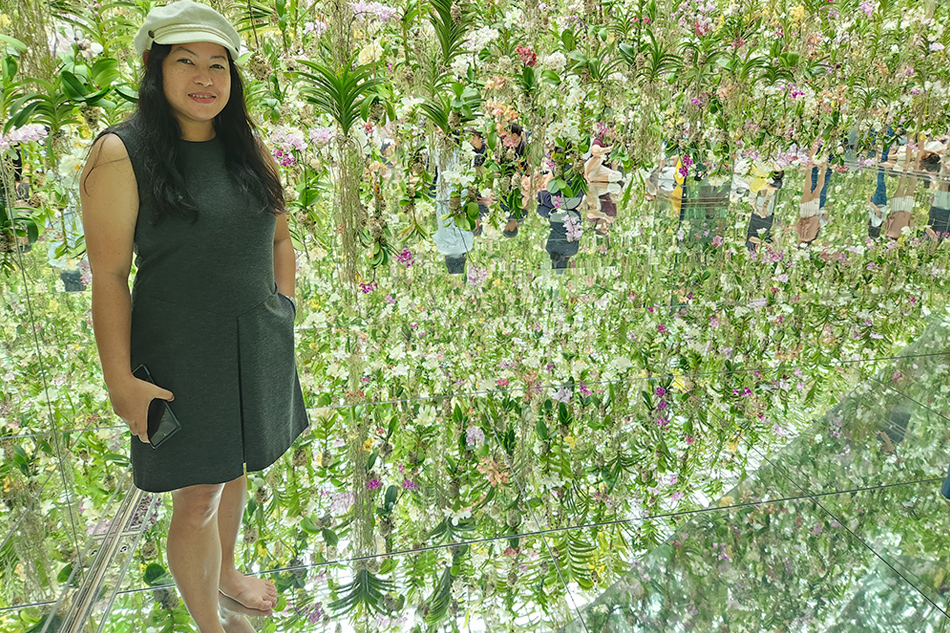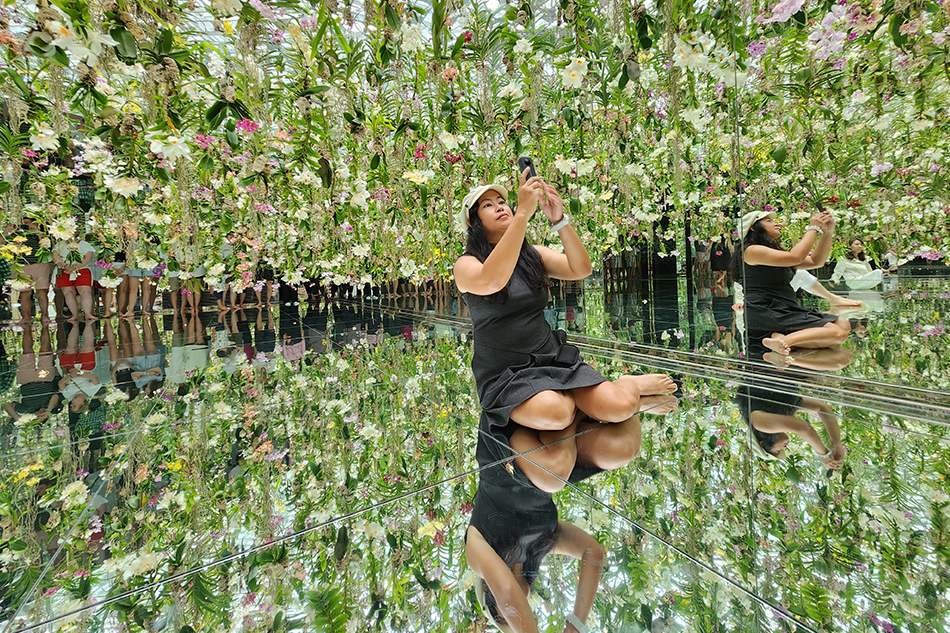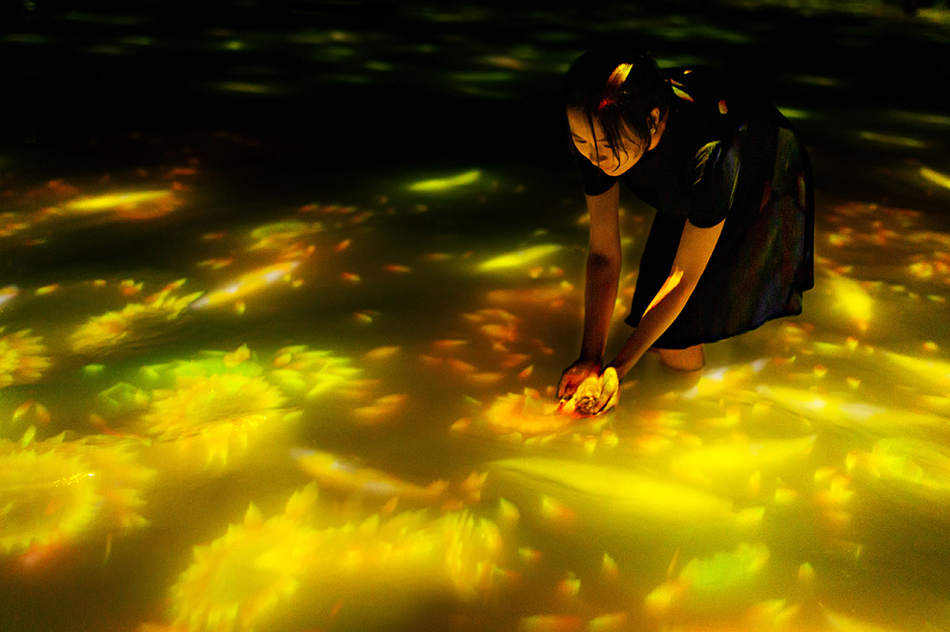Immersing in Infinities: teamLab’s digital art museum in Tokyo | ABS-CBN
ADVERTISEMENT

Welcome, Kapamilya! We use cookies to improve your browsing experience. Continuing to use this site means you agree to our use of cookies. Tell me more!
Immersing in Infinities: teamLab’s digital art museum in Tokyo
Art Fuentes,
ABS-CBN News
Published Jul 14, 2023 10:54 AM PHT
|
Updated Jul 14, 2023 11:54 AM PHT
Japan is a country where cutting-edge technology co-exists with tradition and history, where an all-pervading fast-paced commercialism lives side by side with Zen. teamLab Planets fuses these contrasting elements of life into immersive artworks that leave visitors in awe of what’s possible.
Japan is a country where cutting-edge technology co-exists with tradition and history, where an all-pervading fast-paced commercialism lives side by side with Zen. teamLab Planets fuses these contrasting elements of life into immersive artworks that leave visitors in awe of what’s possible.
teamLab Planets is a digital art museum developed by an international collective of artists, programmers, engineers, CG animators, mathematicians, and architects.
teamLab Planets is a digital art museum developed by an international collective of artists, programmers, engineers, CG animators, mathematicians, and architects.
The museum is located in the quieter district of Toyosu in Tokyo’s Koto ward. It features hall-spanning art installations that blend lights, sounds, tactile sensations, and movement.
The museum is located in the quieter district of Toyosu in Tokyo’s Koto ward. It features hall-spanning art installations that blend lights, sounds, tactile sensations, and movement.
From outside, it looks like just another structure lost amid Tokyo’s modern landscape of commercial centers.
From outside, it looks like just another structure lost amid Tokyo’s modern landscape of commercial centers.
ADVERTISEMENT
But inside are halls full of infinities. And Planets.
But inside are halls full of infinities. And Planets.
I had seen the promotional videos of teamLab before, so I had a pretty good idea of what to expect. But seeing the artworks themselves and being literally immersed in some of the installations still left me awed and entranced.
I had seen the promotional videos of teamLab before, so I had a pretty good idea of what to expect. But seeing the artworks themselves and being literally immersed in some of the installations still left me awed and entranced.
It’s a show unlike anything else.
It’s a show unlike anything else.
Visitors begin their journey barefoot. Shoes and other footwear are removed as the museum wants you to also experience sensations through your feet. Some of the installations also require people to wade through water.
Visitors begin their journey barefoot. Shoes and other footwear are removed as the museum wants you to also experience sensations through your feet. Some of the installations also require people to wade through water.
First comes “Waterfall of Light Particles at the Top of an Incline.”
First comes “Waterfall of Light Particles at the Top of an Incline.”
ADVERTISEMENT
Without spoiling some of the surprise, your encounter with “Soft Black Hole - Your Body Becomes a Space that Influences Another Body” makes you feel the pull of gravity.
Without spoiling some of the surprise, your encounter with “Soft Black Hole - Your Body Becomes a Space that Influences Another Body” makes you feel the pull of gravity.
After this, you are launched into the next ‘Matrix-like’ experience.
After this, you are launched into the next ‘Matrix-like’ experience.
The "Infinite Crystal Universe" is a maze of lights and mirrors. Look up, down, left or right, the mirrors and lights create the illusion of endlessness. The lights also flash, flicker and ebb and change directions and hues, making you sometimes feel like you are traveling through space via Star Trek’s warp drive or the Star Wars hyperspace.
The "Infinite Crystal Universe" is a maze of lights and mirrors. Look up, down, left or right, the mirrors and lights create the illusion of endlessness. The lights also flash, flicker and ebb and change directions and hues, making you sometimes feel like you are traveling through space via Star Trek’s warp drive or the Star Wars hyperspace.
What follows is a wade across a pond of another kind of infinity called “Drawing on the Water Surface Created by the Dance of Koi and People-Infinity.”
What follows is a wade across a pond of another kind of infinity called “Drawing on the Water Surface Created by the Dance of Koi and People-Infinity.”
While the crystal universe can make you feel situated in an endlessness of linear lights, the koi pond makes you feel like you stepped into the primordial soup of creation with dreamlike fish.
While the crystal universe can make you feel situated in an endlessness of linear lights, the koi pond makes you feel like you stepped into the primordial soup of creation with dreamlike fish.
ADVERTISEMENT
The “fish” swim, dive, dance and swirl around, sometimes literally around you, catching you in a vortex of colors.
The “fish” swim, dive, dance and swirl around, sometimes literally around you, catching you in a vortex of colors.
According to teamLab: “The work is rendered in real time by a computer program. It is neither prerecorded nor on loop. The interaction between the viewer and the installation causes continuous change in the artwork. Previous visual states can never be replicated, and will never reoccur.”
According to teamLab: “The work is rendered in real time by a computer program. It is neither prerecorded nor on loop. The interaction between the viewer and the installation causes continuous change in the artwork. Previous visual states can never be replicated, and will never reoccur.”
After the koi pond comes “Floating in the Falling Universe of Flowers.”
After the koi pond comes “Floating in the Falling Universe of Flowers.”
This artwork is like being in a planetarium, except that the planets and stars are flowers floating and falling through space, and you are floating and falling along with them.
This artwork is like being in a planetarium, except that the planets and stars are flowers floating and falling through space, and you are floating and falling along with them.
Witnessing this installation while standing up is probably not a good idea. If you ever get the chance to visit this, you’ll know why.
Witnessing this installation while standing up is probably not a good idea. If you ever get the chance to visit this, you’ll know why.
ADVERTISEMENT
After visiting the infinities of outer space and alien planets, the next exhibit takes you back down to Earth, or at least Earth of another kind.
After visiting the infinities of outer space and alien planets, the next exhibit takes you back down to Earth, or at least Earth of another kind.
“Moss Garden of Resonating Microcosms - Solidified Light Color, Sunrise and Sunset” puts you in a mossy landscape populated by metallic giant bean-like objects.
“Moss Garden of Resonating Microcosms - Solidified Light Color, Sunrise and Sunset” puts you in a mossy landscape populated by metallic giant bean-like objects.
“With sunrise, the ovoids begin to reflect the world around them. When pushed down by a person or blown by the wind, the ovoid falls back and then rises, releasing a resonating tone. The ovoids around it also respond one after another, continuing to resonate with the same tone,” according to teamLab.
“With sunrise, the ovoids begin to reflect the world around them. When pushed down by a person or blown by the wind, the ovoid falls back and then rises, releasing a resonating tone. The ovoids around it also respond one after another, continuing to resonate with the same tone,” according to teamLab.
We visited during the day, but perhaps it would be best to visit at dusk or in the evening to really appreciate this exhibit.
We visited during the day, but perhaps it would be best to visit at dusk or in the evening to really appreciate this exhibit.
“As the sun sets, the ovoids shine by themselves.”
“As the sun sets, the ovoids shine by themselves.”
ADVERTISEMENT
As you can see by the official photo below, the change at sunset is quite remarkable.
As you can see by the official photo below, the change at sunset is quite remarkable.
The final exhibit, at least when we visited last June, was another infinite maze of flowers — real flowers and not projections of light.
The final exhibit, at least when we visited last June, was another infinite maze of flowers — real flowers and not projections of light.
It is aptly titled: "Floating Flower Garden: Flowers and I are of the Same Root, the Garden and I are One."
It is aptly titled: "Floating Flower Garden: Flowers and I are of the Same Root, the Garden and I are One."
Being surrounded floor to ceiling by flowers and mirrors can make you feel overwhelmed by a sense of lushness. But it can also put you into a stoic kind of mood–at least for the few minutes you get to spend there before the next batch of visitors come in.
Being surrounded floor to ceiling by flowers and mirrors can make you feel overwhelmed by a sense of lushness. But it can also put you into a stoic kind of mood–at least for the few minutes you get to spend there before the next batch of visitors come in.
If you are traveling to Tokyo and want to experience something special aside from the shrines, otaku stuff, Japanese efficiency and food, this museum is worth a visit.
If you are traveling to Tokyo and want to experience something special aside from the shrines, otaku stuff, Japanese efficiency and food, this museum is worth a visit.
ADVERTISEMENT
This July, the museum said it will also have something extra special as the koi pond gets transformed into “a space where sunflowers bloom.”
This July, the museum said it will also have something extra special as the koi pond gets transformed into “a space where sunflowers bloom.”
The exhibit "Floating in the Falling Universe of Flowers" will also be a space where “flowers grow, bud, bloom, and eventually petals fall and the flowers die.”
The exhibit "Floating in the Falling Universe of Flowers" will also be a space where “flowers grow, bud, bloom, and eventually petals fall and the flowers die.”
“The cycle of birth and death continues perpetually,” teamLab said.
“The cycle of birth and death continues perpetually,” teamLab said.
Travelers who want to visit the exhibits may check out their website and YouTube channel for further details.
Travelers who want to visit the exhibits may check out their website and YouTube channel for further details.
The museum is open from 9 a.m. to p.m. on weekdays and up to 10 p.m. on weekends and holidays.
The museum is open from 9 a.m. to p.m. on weekdays and up to 10 p.m. on weekends and holidays.
ADVERTISEMENT
Tickets for adults range from 3,200 to 3,500 yen.
Tickets for adults range from 3,200 to 3,500 yen.
ADVERTISEMENT
ADVERTISEMENT





